Traditional Poster
Advancing Non-Contrast MRI: Blood-Flow, CEST, & Magnetization Transfer
ISMRM & ISMRT Annual Meeting & Exhibition • 10-15 May 2025 • Honolulu, Hawai'i

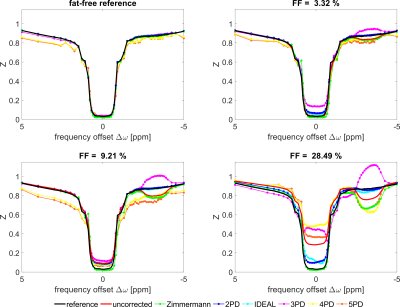 |
4760. Comparison
of Fat Correction Methods in CEST Imaging: A Phantom Study at 3
T
N. Kempa, P. Boyd, P. Menshchikov, M. Ladd, P. Bachert, A.
Korzowski
German Cancer Research Centre (DKFZ), Heidelberg, Germany
Impact: We
compared and ranked existing fat correction methods for CEST
imaging in a phantom study, representing an important
milestone towards application in vivo. Prospectively, these
findings hold great promises for making full use of all CEST
contrasts in lipid-containing tissues.
|
|
 |
4761. Investigating
spatial distribution of metabolite diffusion using
diffusion-weighted chemical exchange saturation transfer
Y. Jung, J. Park, S-G Kim, S-H Park
Korea Advanced Institute of Science and Technology, Daejeon, Korea, Republic of
Impact: Analysis on amide-weighted ADC showed comparable
results to findings in DW-MRS studies with more spatial
information. This suggests that DW-CEST has the potential to
examine metabolite diffusion with better spatial resolution
than DW-MRS.
|
|
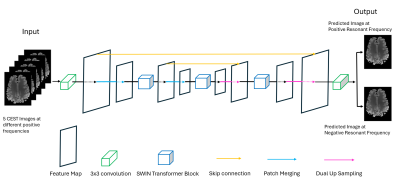 |
4762. Swin-Transformer
based B0 inhomogeneity correction for GluCEST and NOE MRI
Y. Li, P. Jacobs, D. Kumar, A. Swain, R. P. R. Nanga, J.
Detre, R. Reddy, Z. Wang
University of Maryland School of Medicine, Baltimore, United States
Impact: This success of the proposed method suggests
that the Swin Transformer could potentially serve as a
general model for B0 correction across various metabolites
in a single model if sufficient data is available.
|
|
 |
4763. CEST
and Z-spectrum analysis proton (ZAP) in the liver
Y. Kuwatsuru, V. Malis, Y. Kassai, C. Sirlin, M. Miyazaki
University of California, San Diego, La Jolla, United States
Impact: This
study demonstrates the potential of multiparametric CEST and
ZAP imaging that non-invasively identifed molecular
abnormalities in the liver, providing critical insights into
iron and fat deposition, which could enhance the diagnosis
and management of liver diseases.
|
|
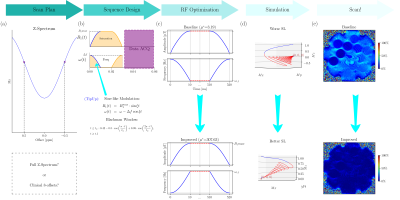 |
4764. VO-CEST:
Variable-Optimized CEST using optimized adiabatic RF design on
3T
Z. Xie, Z. Zhou, P. Hu
School of Biomedical Engineering, Shanghaitech Unversity, Shanghai, China, Shanghai, China
Impact: A novel protocol that focusing on optimizing the
RF waveform and bandwidth is proposed and can be broadly
used in tasks involving adiabatic pulses.
|
|
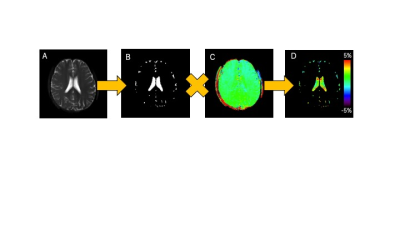 |
4765. Noninvasive
Evaluation of Cerebrospinal Fluid Protein Concentration Using
Amide Proton Transfer-weighted Imaging
T. Kawasaki, K. K. Tha, M. Yoneyama, K. Ishizaka, K. Kudo
Hokkaido University Hospital, Sapporo, Japan
Impact:
APTw imaging shows potential as a noninvasive tool to estimate protein concentration in CSF, offering a safer alternative to lumbar puncture for assessing CSF proteins. |
|
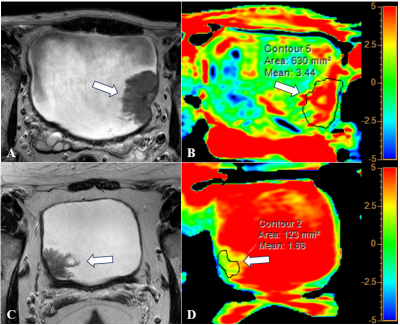 |
4766. Amide
Proton Transfer-weighted MRI in Predicting Muscle invasion and
Histologic Grade of Bladder Cancer
Y. Ma, H. Xu, X. Ning, H. Liu, Y. Chen, M. Cui, X. Bai, D.
Zheng, H. Wang
First Medical Center of Chinese PLA General Hospital, Beijing, China
Impact: This finding suggests that the preoperative
application of APT for predicting the grade of bladder
cancer may provide a more comprehensive evaluation scheme
for personalized treatment of bladder cancer patients.
|
|
 |
4767. Unsupervised
AnomalyCEST: Unsupervised anomaly detection using CEST MRI of
brain at 7T
A. Swain, P. Jacobs, A. Mathur, R. Reddy
University of Pennsylvania, Philadelphia, United States
Impact: Traditional
CEST MRI methods require large sample sizes and complex
fitting techniques to compare healthy individuals with those
having pathology. Unsupervised anomaly detection of
Z-spectra will enable the detection of anomalous voxels
linked to pathology at an individual level.
|
|
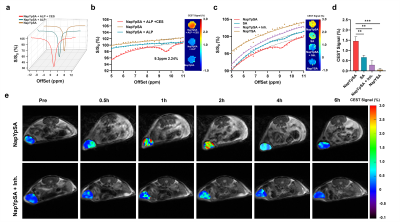 |
4768. Enzyme-Mediated
Nanostructure Transition for Enhanced CEST MRI in
Triple-Negative Breast Cancer
Z. Yu, Q. Wen, Y. Zhang, Y. Yuan
Uinversity of Science and Technology of China, Hefei, Anhui, China
Impact: This enzyme-mediated nanostructure transition
strategy specifically enhances CEST MRI in tumor cells,
facilitating the development of more effective diagnostic
and therapeutic probes for various diseases.
|
|
 |
4769. Exploring
the Origins of the APTw Contrast in the Human Brain Using a
Physically Interpretable Machine Learning Model
F. Kroh, P. S. Boyd, N. von Knebel Doeberitz, H-P Schlemmer,
M. E. Ladd, D. Paech, A. Korzowski
German Cancer Research Center (DKFZ), Heidelberg, Germany
Impact: This work introduces a physically interpretable
model that decodes the APTw contrast mechanisms in the human
brain, analyzing influences of amide and rNOE contrast. The
model provides new insights into factors that impact APTw
imaging, potentially enhancing the clinical interpretation.
|
|
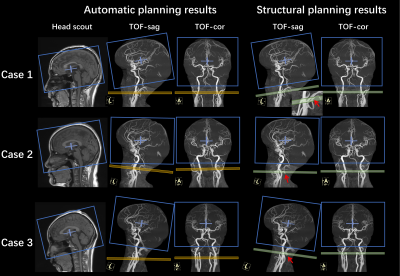 |
4770. Development
and Evaluation of an Automated Pipeline for ASL Scan Planning
and Labeling Plane Positioning
Z. Zhang, H. Han, H. Hao, Q. Wei, X. Wang, X. Meng, N. Wei,
W. Zhu, Y. Suo, S. Chen, J. Jing
Beijing Tiantan Hospital, Capital Medical University, Beijing, China
Impact: The proposed automated ASL planning pipeline
achieves both standardized brain orientation and optimized
labeling plane positioning, potentially reducing labeling
inefficiencies on tortuous arteries and minimizing
false-positive hypoperfusion cases.
|
|
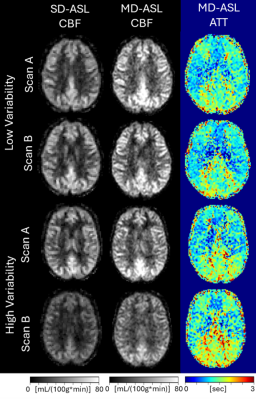 |
4771. Repeatability
of Absolute vs Relative Cerebral Blood Flow and Arterial Transit
Time for Single-Delay and Multi-Delay Arterial Spin Labelling
A. Fothergill, D. Higgins, O. Thomas, D. Coope, I.
Djoukhadar, L. Parkes
The University of Manchester, Manchester, United Kingdom
Impact:
Our repeatability study shows relative CBF has much lower CoV than absolute CBF and therefore relative CBF may be more useful for longitudinal studies. MD-ASL acquisition is preferable, giving lower CoVs for CBF and additional ATT with good repeatability. |
|
 |
4772. Multi-center
and multi-vendor reproducibility of PCASL data on 3T MRI
scanners
R. Echeverria-Chasco, L. Garcia-Ruiz, M. Aastrup, V.
Aramendia-Vidaurreta, M. Bozzetto, P. Brambilla, E. Hansen,
L. Micu, J. M. Mora-Gutierrez, S. Pasini, A. Raj, S.
Ringgaard, A. Strittmatter, M. Taso, I. Urdea, T. Vendelboe,
M. Vidorreta, G. Villa, N. H. Buus, N. Garcia-Fernandez, M.
Trillini, D. C. Alsop, S. T. Francis, L-M Itu, C. Laustsen,
F. G. Zoellner, A. Caroli, M. A. Fernandez-Seara
Clinica Universidad de Navarra, Pamplona, Spain
Impact: Harmonized PCASL sequence for renal perfusion
measurements shows promise for reliable multi-center and
multi-vendor studies
|
|
 |
4773. Blurring-free
3D perfusion and arterial blood T2 mapping using partition
encoding reordered GRASE (PER-GRASE) ASL at 5T
J. Xu, Q. Wei, Q. Pang, W. Fang, X-Y Zhang, H. Li, Z. Chen,
H. Wang, D. Wang, P. Hu, F. Yan, X. Shao
Institute for Medical Imaging Technology, Ruijin Hospital, Shanghai Jiao Tong University School of Medicine, ShangHai, China
Impact: We proposed a PER-GRASE ASL technique for
blurring-free perfusion and arterial blood T2 mapping with
full-brain coverage at 5T, which has the potential to be
adapted for measuring neurovascular function such as brain
oxygenation and BBB function in clinical studies.
|
|
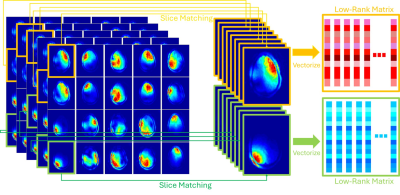 |
4774. MUSIC:
Multi-Coil Unified Sparsity Regularization Using Inter-Slice
Correlation for ASL MRI Denoising
H. Liu, B. Li, Y. Li, M. Taso, M. Tisdall, Y. Chang, J.
Detre, Z. Wang
University of Maryland School of Medicine, Baltimore, United States
Impact: MUSIC enables more accurate perfusion imaging,
potentially benefiting neuroimaging diagnostics and
encouraging further research into SNR enhancement methods
that refine non-invasive imaging across clinical and
research settings.
|
|
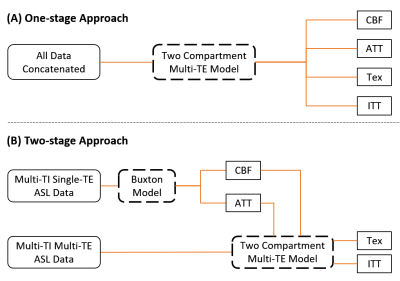 |
4775. Comparing
One-Stage and Two-Stage Model Fitting Approaches in Multi-TE ASL
for Blood-Brain Barrier Permeability Assessment
A. Mahroo, K. Eickel, M. Günther
Fraunhofer Institute for Digital Medicine MEVIS, Bremen, Germany
Impact: This study shows that two-stage approaches,
using different models in each stage, risk error propagation
due to parameter cross-dependence. These insights are
essential for developing more accurate, clinically
applicable BBB imaging models that improve parameter
reliability.
|
|
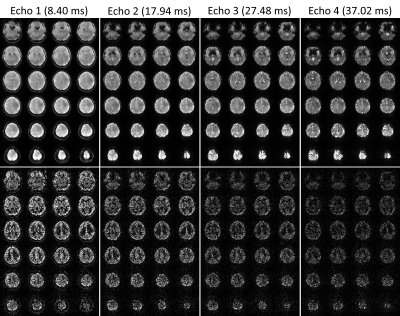 |
4776. Improving
Pseudo-continuous ASL Efficiency at 7 Tesla Using Gapless
Multi-echo EPI
Y. Chang, L. Craven-Brightman, W-c Lo, J. Stockmann, M.
Vidorreta, J. Kufer, M. Taso, J. Detre, M. Juttukonda
Siemens Medical Solutions USA Inc., Malvern, United States
Impact: The gapless multi-echo EPI readout, along with
the proposed processing method, significantly improves the
overall efficiency of arterial spin labeling at 7 Tesla,
which can make ASL faster, more robust, and more accessible
at ultra-high fields.
|
|
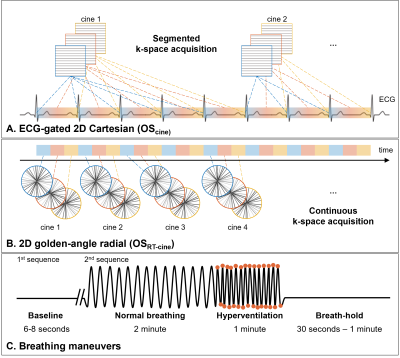 |
4777. 2D
real-time magnetic resonance imaging to characterize myocardial
oxygenation during breathing maneuvers
L. Romanin, J. Banus, C. Roy, J-B Ledoux, A. Mackowiak, R.
van Heeswijk, J. Richiardi, S. Rapacchi, M. Stuber
Siemens Healthineers International AG, Lausanne, Switzerland
Impact:
This study advances oxygen-sensitive CMR by introducing real-time 2D radial imaging with automated processing to continuously capture myocardial oxygenation, extending the wealth of information and the feasibility of this needle-free imaging for cardiovascular diseases. |
|
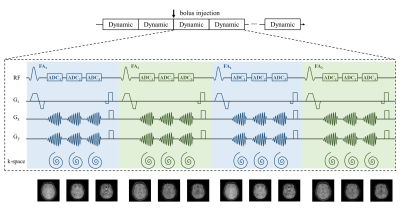 |
4778. Simultaneous
DCE-DSC evaluation with 3D stack-of-spiral FLASH readout
Z. Xu, X. Liu, X. Lin, S. Yu, H. Sun, R. Li, H. Chen
Center for Biomedical Imaging Research, Tsinghua University, Beijing, China
Impact: DFA-ME
enables whole-brain dynamic T1 and T2* mapping at
2.0×2.0×6.0 mm3 spatial
resolution and a temporal resolution of 2.1 s, allowing
simultaneous and accurate evaluation of DCE and DSC with
a single-dose contrast injection.
|
|
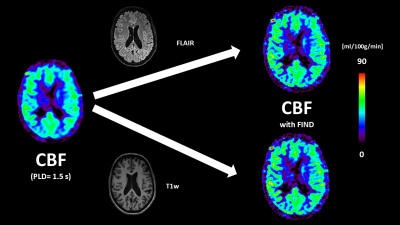 |
4779. Fourier
Informed Native Deblurring (FIND): A Robust Solution for
Blurring in pseudo-Continuous Arterial Spin Labeling (pCASL) MRI
M. Zucchelli, O. Dipasquale, C. Papageorgakis, V. Prevost,
E. Poirion, J. Savatovsky, B. Triare, S. Casagranda
Olea Medical, La Ciotat, France
Impact: FIND improves pCASL MRI image quality, enabling
a more accurate assessment of brain pathologies and
advancing clinical imaging applications.
|
The International Society for Magnetic Resonance in Medicine is accredited by the Accreditation Council for Continuing Medical Education to provide continuing medical education for physicians.